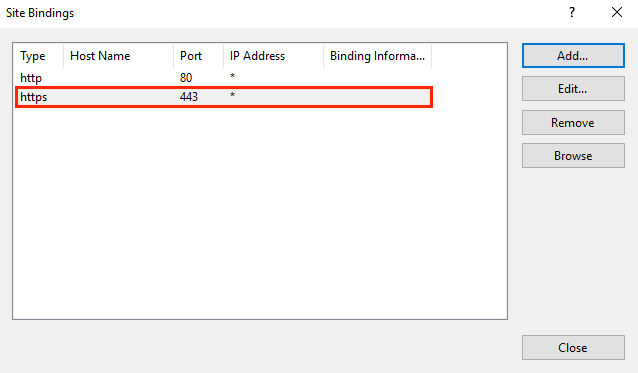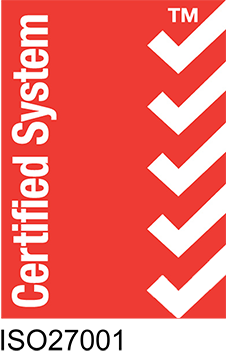Use the instructions on this page to use IIS 10 to create your certificate signing request (CSR) and then to install your SSL certificate on your Windows server 2016.
Using IIS 10 to Create Your CSR
1. In the Windows start menu, type Internet Information Services (IIS) Manager and open it.
2. In Internet Information Services (IIS) Manager, in the Connections menu tree (left pane), locate and click the server name.
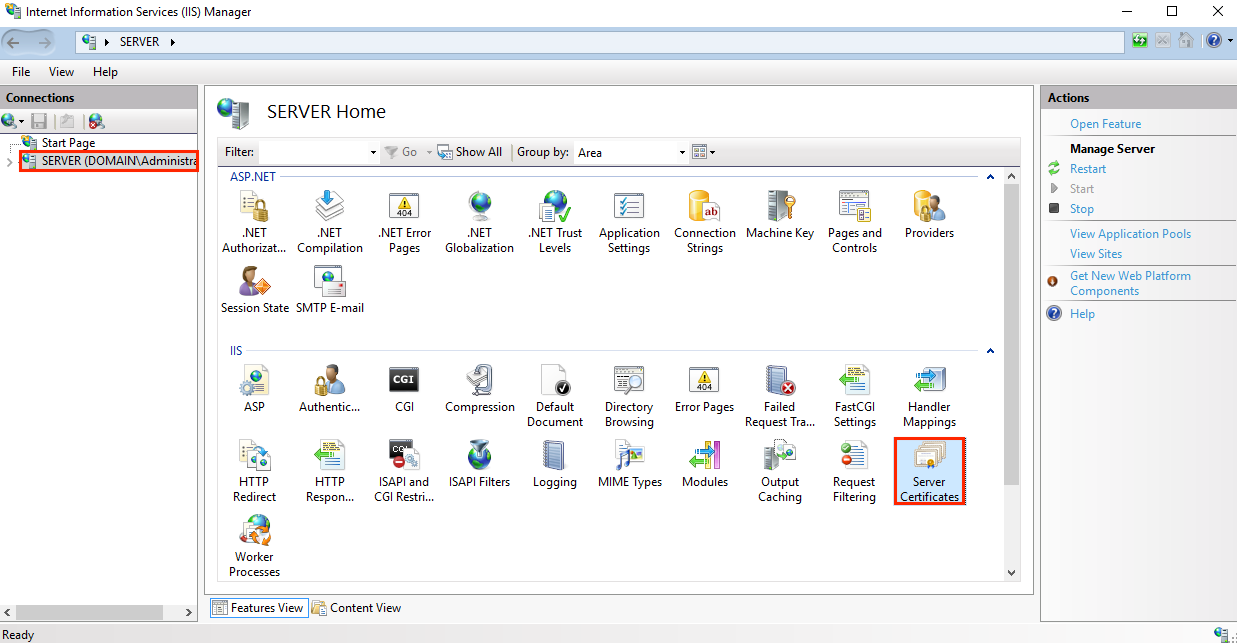
3. On the server name Home page (center pane), in the IIS section, double-click Server Certificates.
4. On the Server Certificates page (center pane), in the Actions menu (right pane), click the Create Certificate Request… link.
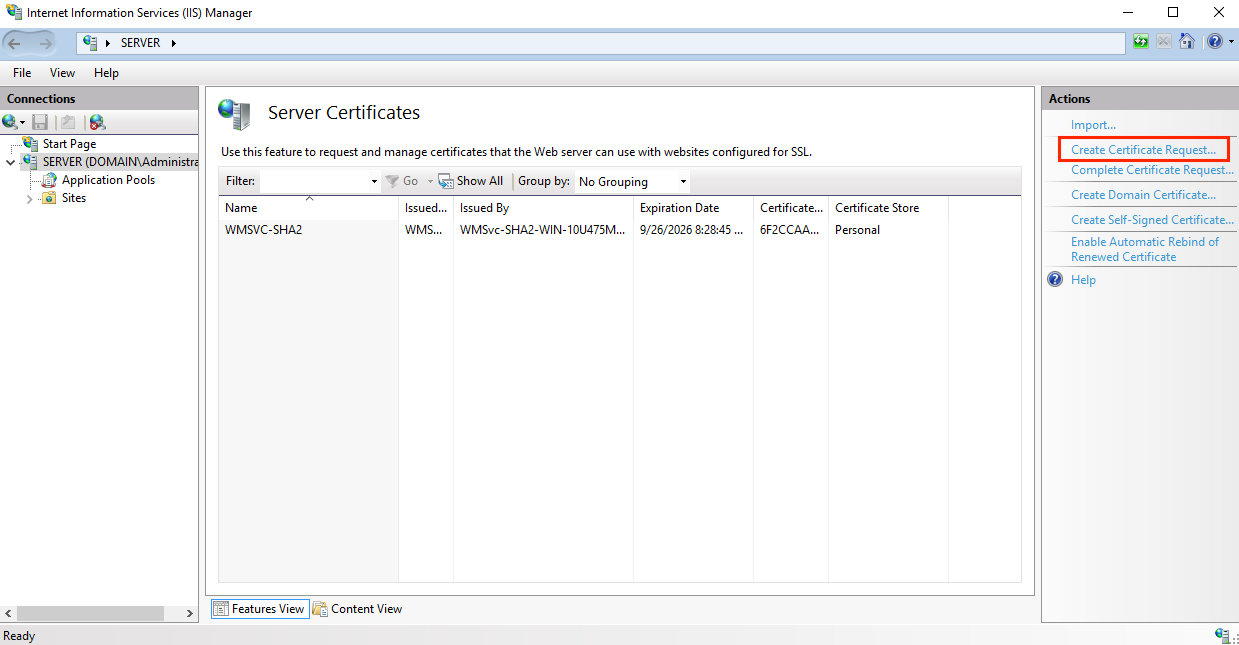
5. In the Request Certificate wizard, on the Distinguished Name Properties page, provide the information specified below and then click Next:
| Common name: | Type the fully-qualified domain name (FQDN) (e.g., www.example.com). Use . for wildcard certificate e.g., .example.com |
| Organization: | Type your company’s legally registered name (e.g., YourCompany, Inc.). |
| Organizational unit: | The name of your department within the organization. Frequently this entry will be listed as "IT", "Web Security," |
| or is simply left blank. | |
| City/locality: | Type the city where your company is legally located. |
| State/province: | Type the state/province where your company is legally located. |
| Country: | In the drop-down list, select the country where your company is legally located. |
6. On the Cryptographic Service Provider Properties page, provide the information below and then click Next.
| Cryptographic | In the drop-down list, select Microsoft RSA SChannel Cryptographic Provider, |
| service provider: | unless you have a specific cryptographic provider. |
| Bit length: | In the drop-down list select 2048, unless you have a specific reason |
| for opting for larger bit length. |
7. On the File Name page, under Specify a file name for the certificate request, click the … box to browse to a location where you want to save your CSR. Note: Remember the filename that you choose and the location to which you save your csr.txt file. If you just enter a filename without browsing to a location, your CSR will end up in C:\Windows\System32.
8. When you are done, click Finish.
9. Use a text editor (such as Notepad) to open the file. Then, copy the text, including the -----BEGIN NEW CERTIFICATE REQUEST----- and -----END NEW CERTIFICATE REQUEST----- tags, and paste it into the DDNS order form.
10. DDNS.com.au -> Client Area -> Products / Services -> View ->
11. Look for Generate Certificate (Green button for renewals) or for certificates already issued further down the page you will see Re-Issue Certificate, the latter allows you to re-key a certificate without changing the details or its expiry date.
12. Once you have Completed Domain Control Verification the certificate will be issued to you.
IIS 10: How to Install and Configure Your SSL Certificate on Windows Server 2016
1. On the server where you created the CSR, save the SSL certificate .cer file (e.g., your_domain_com.cer) that the Certificate Authority sent to you.
2. In the Windows start menu, type Internet Information Services (IIS) Manager and open it.
3. In Internet Information Services (IIS) Manager, in the Connections menu tree (left pane), locate and click the server name.
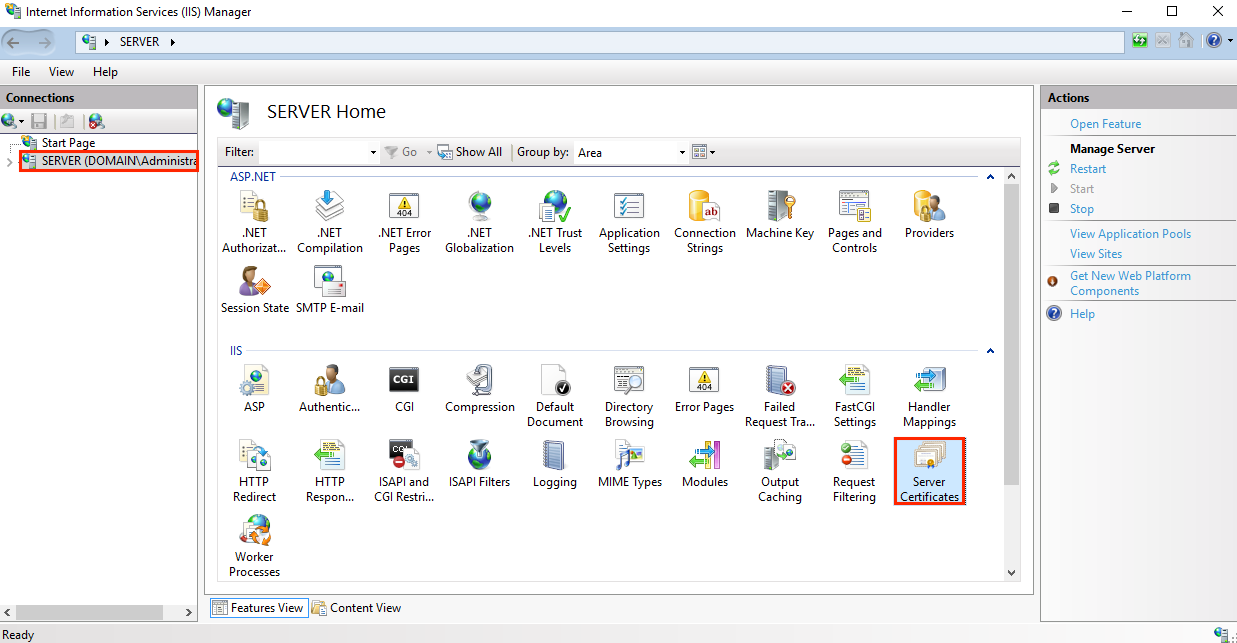
4. On the server name Home page (center pane), in the IIS section, double-click Server Certificates.
5. On the Server Certificates page (center pane), in the Actions menu (right pane), click the Complete Certificate Request… link.
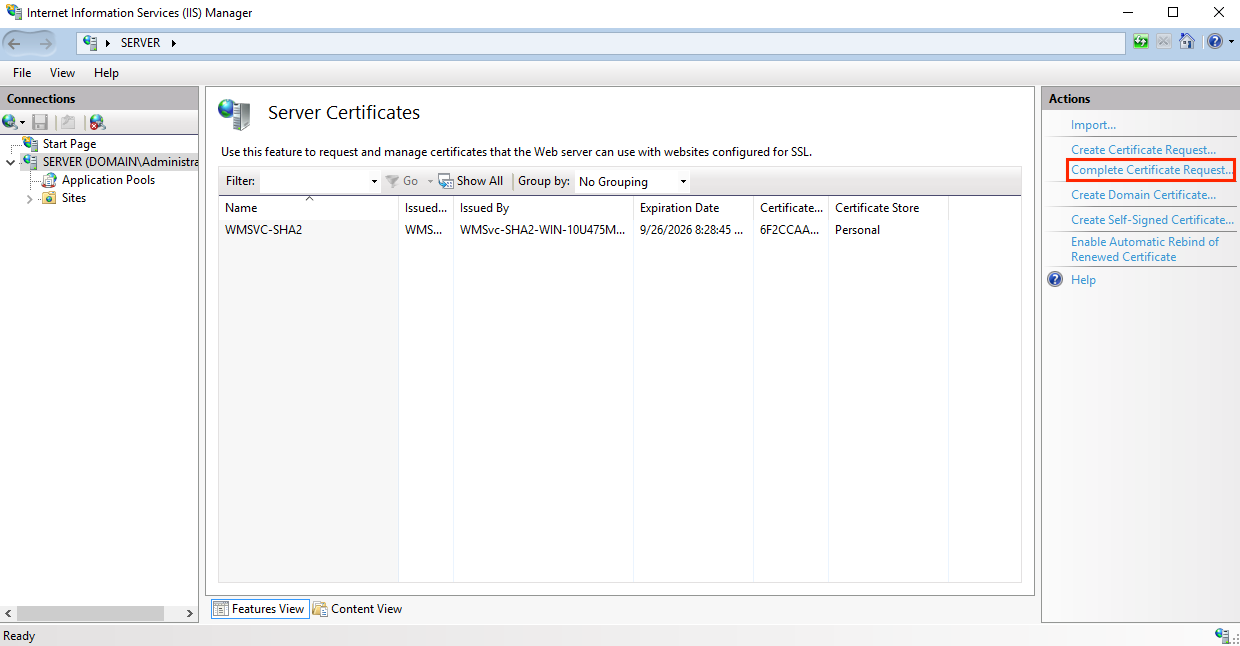
6. In the Complete Certificate Request wizard, on the Specify Certificate Authority Response page, do the following and then click OK:
| File name containing the certificate authority's response: |
Click the … box and browse to and select the .cer file (e.g., your_domain_com.cer) that DigiCert sent to you. |
| Friendly name: | Type a friendly name for the certificate. |
| The friendly name is not part of the certificate; instead, it is used to identify the certificate. | |
| This information helps identify the issuer and expiration date for each certificate. It also helps distinguish multiple certificates with the same domain name. | |
| Select a certificate store for the new certificate: |
In the drop-down list, select Web Hosting. |
7. Now that you've successfully installed your SSL certificate, you need to assign the certificate to the appropriate site.
8. Assign SSL Certificate - In Internet Information Services (IIS) Manager, in the Connections menu tree (left pane), expand the name of the server on which the certificate was installed. Then expand Sites and click the site you want to use the SSL certificate to secure.
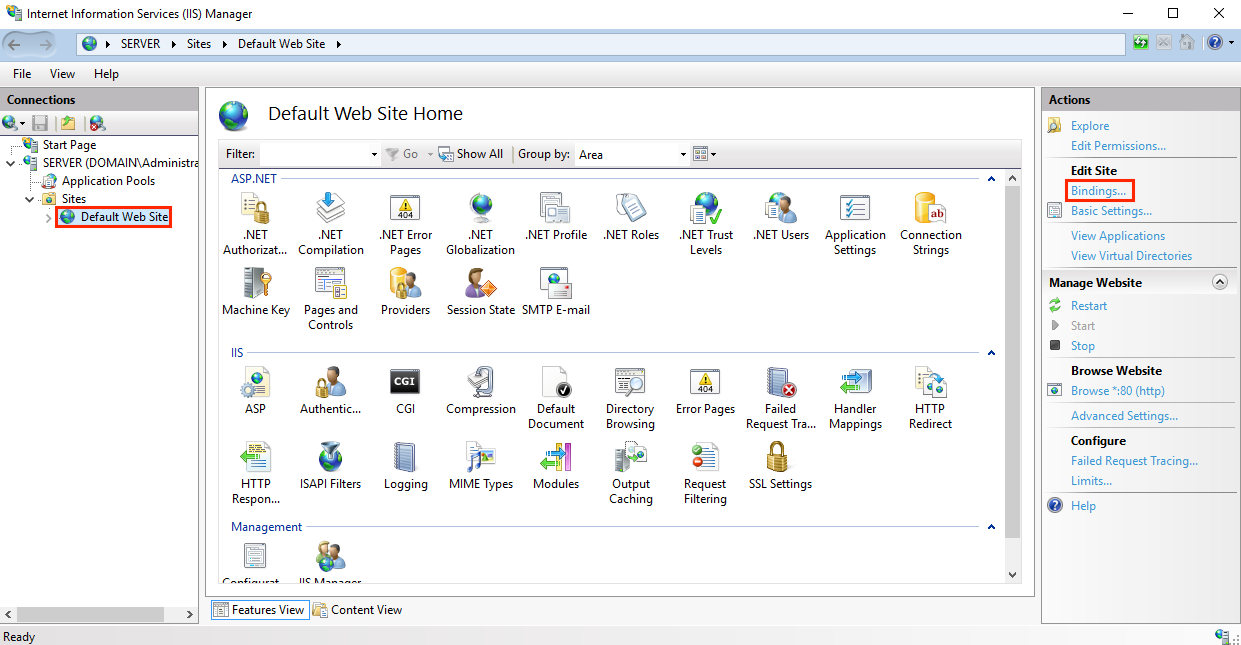
9. On the website Home page, in the Actions menu (right pane), under Edit Site, click the Bindings… link.
10. In the Site Bindings window, click Add.
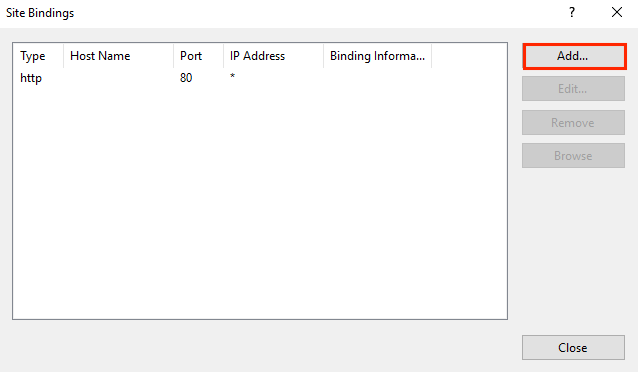
11. In the Add Site Bindings window, do the following and then click OK:
| Type: | In the drop-down list, select https. |
| IP address: | In the drop-down list, select the IP address of the site or select All Unassigned. |
| Port: | Type port 443. The port over which traffic is secure by SSL is port 443. |
| SSL certificate: | In the drop-down list, select your new SSL certificate (e.g., yourdomain.com). |
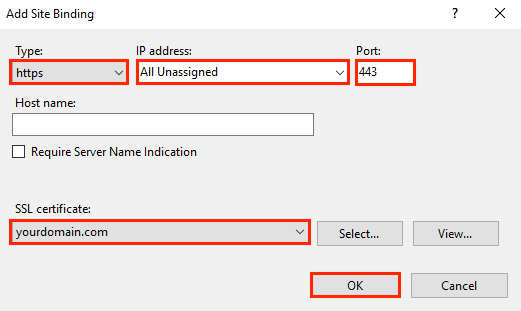
12. Your SSL certificate is now installed, and the website configured to accept secure connections.
